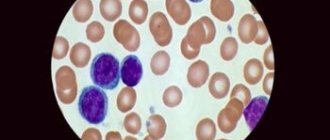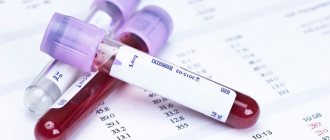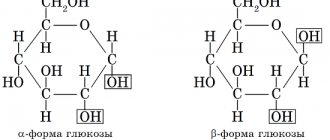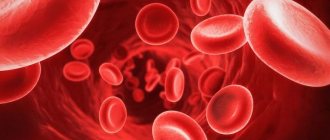There are many hormones that provide reproductive function in the body of both men and women. One of them is prolactin. The name of the substance indicates that its main activity is related to lactation (pro lactation); the hormone prolactin in women is responsible for this process. It is important during fertilization and pregnancy. In the body of men, this substance affects spermatogenesis. And few people know that prolactin is a stress hormone.
Hormone production and types
The main amount of prolactin is produced in the anterior lobe of the pituitary gland (adenohypophysis). This process is additionally controlled by the hypothalamus. The tissues of the central nervous and immune systems, placenta, and mammary glands also secrete this hormone in small quantities.
By its biochemical nature it belongs to peptide hormones, prolactin-like proteins. Almost all functions of the active substance are directly or indirectly related to reproduction . There are four forms of the hormone found in the body:
- monomeric prolactin (or “small” – molecular weight (MW) 22,000);
- dimeric (or “large” - MW 50,000);
- three-dimensional (or “very large” - MM 100,000);
- glycolyzed (MW – 25,000).
This transformation of the substance molecule is explained by the presence of three disulfide bridges, which give prolactin special chemical properties and the ability to undergo spatial modifications. Macroprolactin and monomeric substances exhibit different biological activities.
Monomeric prolactin has the highest degree of interaction with cell receptors; its share in the body is about 80%. The presence of a large number of other forms of the hormone in the blood makes it possible to diagnose pathological conditions; they are normally present in the blood of healthy people, but in small concentrations.
To date, not all functions of prolactin are known. This is due to its different biological activities, which directly depend on the isoform of the substance. In medicine, there is a hypothesis that manifestations of the peripheral functions of the hormone are associated with them, but this issue has not yet been thoroughly studied.
Symptoms and consequences
Elevated prolactin in women affects many body functions.
But most of all, hyperprolactinemia affects the mammary glands and ovaries. Usually, with an increased amount of hormone in the blood, the patient looks absolutely normal, sometimes she may not show any complaints, pathology is detected only when attempts to conceive a child are unsuccessful. The most common symptoms of increased prolactin in women include: Galactorrhea
- the appearance of secretions from the mammary glands, unrelated to feeding the child. The amount released is not always directly proportional to the level of increase in lactotropic hormone. Typically, less milk is produced over time if left untreated. The amount of discharge from the mammary gland varies from a few milliliters with pressure to spontaneous secretion of large amounts of colostrum.
Disorders of the menstrual cycle.
Sometimes this symptom may be the only complaint with increased LTG in the blood. Changes in the cycle range from delays of several days to complete cessation of menstruation - amenorrhea. This symptom is leading in the diagnosis of hyperprolactinemia.
Infertility.
Due to disturbances in the hormonal status of a woman, ovulation does not occur, due to which she cannot conceive a child. Infertility is almost always diagnosed due to changes in the menstrual cycle.
Hyperestrogenism
– increased amount of estrogen in the blood. This syndrome manifests itself as vaginal dryness and decreased libido. Against the background of long-term hormonal imbalance, a woman can develop uterine fibroids, endometriosis, and osteoporosis.
Hyperandrogenism
– increased levels of male sex hormones (testosterone) in the blood. This condition is accompanied by the appearance of acne, male pattern hair growth, increased oiliness of hair and skin, and deposition of fat on the abdomen.
Obesity.
An increase in mammotropin in the blood contributes to excessive appetite and increased development of subcutaneous fat.
Deterioration of vision.
With prolonged hyperprolactinemia, an increase in the cells of the pituitary gland occurs, which is localized near the optic nerves. The gland begins to compress them, which leads to deterioration of vision. With a long-standing excess of prolactin, memory impairment and sleep problems may occur.
Functions
Prolactin is produced in both sexes. The hormone affects the body of both women and men as follows:
- promotes the manifestation of secondary sexual characteristics;
- regulates sexual behavior;
- increases immunity;
- provides a balance of calcium, sodium, magnesium and water;
- released during stress to increase the body's adaptive capabilities;
- influences weight gain.
A relationship has been identified between prolactin and stress. Hormone levels increase significantly in any stressful situation . This applies to both nervous and physical stress. The concentration of the substance in the body of both women and men may increase in the presence of serious pathologies. In such cases, the endocrinologist should provide advice on hormonal therapy.
What is prolactin?
This term refers to a hormone produced by the pituitary gland. It is also called lactogenic hormone. This means that the element is responsible for the synthesis of milk after childbirth. The key function of the substance is to stimulate lactation.
In addition, an increase in the substance within the physiological norm is observed under the influence of stress factors. That’s why prolactin is often called the stress hormone. Sometimes an increase in an element indicates abnormal processes occurring in the body. In this situation, the help of an endocrinologist and normalization of the balance of hormones in the body is required.
Among women
The primary function of the lactation hormone in a woman’s body is the conversion of colostrum into breast milk in women in labor and the activation of its production. During the feeding period, the relationship between estradiol and prolactin is clearly expressed. The latter exhibits a contraceptive effect, suppressing the process of egg maturation.
In addition, the normal concentration of the substance is of decisive importance for the reproductive function of a woman:
- prolactin affects conception;
- ensures attachment of the fertilized egg to the inner walls of the uterus;
- affects the normal course of pregnancy;
- promotes the active formation of glandular tissue of the mammary glands in the last trimester of pregnancy;
- reduces the pain threshold during labor;
- stimulates the newborn's first breath.
The hormone prolactin - what is it responsible for in women?
The manifestation of female diseases most often occurs due to hormonal imbalance. Various disorders associated with the monthly cycle (absence of critical days, strong or, on the contrary, scanty discharge, disorders associated with the ovulation process) lead to infertility. If women have problems with the mammary glands, they often manifest themselves due to an imbalance of prolactin. Thus, an increased balance of the hormone leads to indifference to sex, the psycho-emotional state is also disturbed and physical ailments may appear.
After all, prolactin takes part in many reactions in the body, in particular:
- Normalizes the activity of the adrenal glands, activates the synthesis of androgens.
- Affects the development of secondary sexual reactions in girls, promotes the development of the mammary glands.
- Prolactin plays an important role in preparing the breasts of pregnant women for the process of lactation.
- This hormone is also responsible for the amount of milk released by a woman in labor when feeding her baby.
- Thanks to prolactin, pregnant women do not become pregnant again - it fulfills the mission of a contraceptive barrier.
- If prolactin is normal, then women exhibit maternal instinct.
- It is involved in maintaining the balance of progesterone in the body of a pregnant woman, prevents miscarriages, and saves from premature birth.
At the doctor
If we summarize the above facts, then prolactin can be given the role of being responsible for the sexual and reproductive process.
Reasons for the increase
All the reasons why prolactin can increase in women and men can be divided into three groups:
- Certain physiological conditions.
- Side effects of taking medications.
- Endocrine disorders.
A physiological increase in hormone concentration is observed:
- during night sleep (after 1-1.5 the level of the substance begins to increase);
- during sexual contact;
- with emotional overload;
- during active physical activity;
- as a result of excess protein foods.
The stress hormone prolactin gives the highest levels in the appropriate situation, which is why it has this name. Natural causes of a significant increase in the hormone are pregnancy and breastfeeding , such indicators are considered normal.
High hormone levels are observed with long-term use of drugs:
- high-dose oral contraceptives;
- antidepressants;
- anti-vomiting medications;
- a drug for the treatment of ulcers and hypertension;
- psychotropic medications.
Endocrine disorders associated with increased prolactin include:
- Benign tumor of the pituitary gland (prolactinoma).
- Thyroid dysfunction. It can be caused by a disturbance in the concentration of thyroid-stimulating hormone (TSH), which is secreted by the pituitary gland. This hormone has a direct effect on the production of thyroxine and triiodothyroxine (the main thyroid hormones). Stable TSH and prolactin levels are very important during pregnancy.
- Multiple ovarian cysts.
An indirect effect on the increase in prolactin is exerted by malignant neoplasms, chronic diseases of the genital organs, herpes zoster, liver and kidney diseases, and pathological production of the hormone by other tissues.
Features of preparing and conducting a blood test for prolactin
To determine the amount of prolactin, venous blood is used, which is most often taken from the cubital vein. The doctor who ordered the blood test must explain how to properly prepare for the procedure, since the accuracy of the test result depends on this.
When preparing for a blood test for prolactin, you should adhere to the following recommendations:
- 24 hours before the study you need to avoid sexual intercourse;
- the day before the analysis, you need to wear soft underwear that will not irritate the nipples;
- the day before the analysis, you need to reduce physical activity and protect yourself from stress;
- do not drink alcohol the day before the test;
- A blood test for prolactin is taken strictly on an empty stomach. The last meal should be no later than eight hours before the blood test. Dinner the day before should consist of easily digestible food (yogurt, kefir, stew or vegetable salad);
- You need to get enough sleep before the test, so try to go to bed early. It is also recommended to donate blood no earlier than three hours after sleep;
- do not smoke two hours before blood sampling;
- come to the clinic 20-30 minutes before the appointed time to rest from the road and calm down, since even minor physical activity or anxiety can affect the level of prolactin in the blood.
It is also important to choose the right time of day to take a blood test, since the hormone prolactin is released unevenly throughout the day.
The most suitable time for taking blood is 8-10 am.
Also, the level of prolactin in the blood is affected by the phases of the menstrual cycle, so it is better to carry out the analysis between the fifth and eighth day after menstruation.
If a prolactin test was prescribed for a woman who has stopped breastfeeding, it is recommended to donate blood for testing 7-8 days after the baby was last put to the breast.
Symptoms of high prolactin
Frequent headaches, depression, weight gain, decreased performance, emotional instability, sleep disturbances are common symptoms of increased hormone concentrations (hyperprolactinemia).
In non-pregnant and non-lactating women, high prolactin causes infertility, soreness of the mammary glands, their swelling and unreasonable secretion of milk, signs of osteoporosis are observed, and hair growth on the face, legs, and chest is activated.
Testosterone is a prolactin antagonist. In men, when the concentration of the latter increases, impotence and infertility occur, sexual desire decreases, the mammary glands increase in size, and premature hair loss on the head begins.
Physiological inhibition of reproductive function
Prolactin is a hormone that blocks the possibility of pregnancy during breastfeeding. While a woman is breastfeeding and does not introduce complementary foods, the eggs in the ovaries do not mature. Accordingly, it is impossible to get pregnant during this period.
When a baby drinks mom's milk, it irritates the nipple. This is a signal for the body to produce prolactin. This hormone is necessary for the production of more breast milk. At the same time, it prevents recurrent pregnancy. Prolactin inhibits the formation of follicle-stimulating hormone in the pituitary gland. As a result, FSH does not stimulate the growth of follicles in the ovaries. Ovulatory processes cease for the entire period of lactation.
Lactation is often used as a method of contraception. However, it is worth understanding that in certain circumstances pregnancy becomes possible. They are as follows:
- More than 6 months have passed since the start of breastfeeding;
- the child began to receive complementary foods;
- no night feedings;
- the intervals between feedings are more than 3 hours.
Reproductive function is quickly restored after cessation of lactation. In addition, some women do not breastfeed their children at all, or combine breastfeeding with formula milk. In this case, reliable contraception is not achieved.
Reasons for the downgrade
The age-related decrease in prolactin levels is physiologically justified. But there are other reasons that lead to a decrease in hormone levels in women and men:
- heredity (genetic pathology of the pituitary gland, hypothalamus);
- increased secretion of the gonads (for example, with polycystic ovary syndrome);
- tumors and operations on the pituitary gland;
- head injuries and damage to the pituitary region;
- irradiation;
- past infectious diseases (for example, mumps in men);
- taking certain medications.
Hormone functions
In the female body, the hormone prolactin provides solutions to the following problems:
- During puberty, in combination with other female hormones, it promotes the development of mammary glands in girls.
- Activates the development of mammary glands during pregnancy. During this period, high levels of estrogen and progesterone are observed. Due to this, the effect of prolactin on the glands is blocked. That is why there is no lactation. After the baby is born, the amount of progesterone and estrogen decreases greatly. As a result, the blocking effect on prolactin disappears, which leads to the appearance of lactation.
- Activates milk synthesis after childbirth. Prolactin is responsible for the production of fat and casein.
- Prevents the development of malignant breast lesions.
- Activates the secretory functions of the corpus luteum and the formation of progesterone in it. This means that the substance is responsible for regulating the menstrual cycle.
- Controls the movement of water and ions in the amniotic fluid. Due to this, it is possible to regulate its quantity and structure.
- Prevents the occurrence of ovulation during lactation. This allows you to avoid a new pregnancy.
- Provides the emergence of maternal instinct.
Men's bodies also contain some prolactin. Representatives of the stronger sex are characterized by the following functions of prolactin:
- Responsible for the proper functioning of the testicles and the development of secondary symptoms during adolescence;
- Maintains normal erection;
- Activates the secretory function of the prostate;
- Supports sperm motility;
- Promotes weight gain in seminiferous tubules and testicles.
With prolactin deficiency, insufficient development of the mammary glands is observed. In this case, the amount of hair under the arms and on the pubis is reduced. Women do not produce milk during lactation. In men, the composition of sperm deteriorates. However, low prolactin levels are observed much less frequently than high ones. It is also worth considering that the hormone affects other systems and organs. It manifests itself in the following functions:
- Slight analgesic effect;
- Onset of orgasm;
- Impact on immune functions;
- Development of new vessels;
- Normalization of the structure of the myelin sheath of nerve fibers.
Symptoms of low prolactin
Signs of low prolactin are manifested in dysfunction of the reproductive system, mental disorders are recorded, and metabolic processes fail. Women and men develop infertility, obesity, sleep disturbances, frequent headaches, and nervous disorders in the form of phobias and obsessive fears.
Women may have self-abortions in the early stages, a small amount or complete absence of milk, and cycle disruptions. Reduced prolactin (hypoprolactinemia) is a rare phenomenon, occurs unnoticed, and the combination of symptoms is individual in nature.
Hormone norm
The production of prolactin is impulsive. Its fluctuations are influenced by many factors: stress, physical activity, sexual intercourse, food intake, the use of certain medications (hormonal contraceptives, antidepressants). LTG levels in women vary according to the menstrual cycle. It is also influenced by the time of day and sleep phases: in the short sleep phase, the maximum concentration of the hormone in the blood is recorded, a few hours after waking up it decreases to minimum values. The norm for prolactin in non-pregnant women is 4.1–34 ng/ml.
If elevated LTG levels are not detected during pregnancy or lactation, disorders of the reproductive system may occur.
During pregnancy, the amount of LTG increases sharply, its level increases with each trimester. Increased secretion of the hormone prevents the production of progesterone, promotes the replacement of adipose tissue in the mammary glands with glandular tissue, provides an analgesic effect, reducing the sensitivity of the breast and thereby preparing it for lactation. When a baby begins to suckle, receptors from the nipples transmit a signal to the hypothalamus, which stimulates the pituitary gland to produce prolactin. After childbirth and the onset of lactation, the hormone level decreases slightly, but remains elevated for a long time relative to the pre-pregnancy level.
Norms of prolactin in pregnant women:
- up to 13 weeks – from 3.2 to 43 ng/ml;
- 13–27 weeks – from 13 to 166 ng/ml;
- Weeks 27–42 – from 13 to 318 ng/ml.
The hormone level in men is lower than in women – 2.5–17 ng/ml.
Determination of hormone levels
To determine the concentration of prolactin, a biochemical blood test is performed, which is taken from a vein. To obtain reliable results, the test must be taken on an empty stomach in the morning from 8 to 10 , and a number of preparatory measures must be followed (exclude stress factors, sexual intercourse, exposure to excessive heat and cold). Limitations are due to the fact that the level of the substance changes during the day and is influenced by external factors.
A laboratory blood test is not the only method for determining the concentration of the active substance. A more reliable result is obtained when conducting a complex of medical studies. In case of significant deviations from normal indicators, the following is additionally carried out:
- MRI of the brain. The area of the pituitary gland and hypothalamus is examined. Contrast if necessary.
- Radiography. Skeletal bones are analyzed for irritation.
- General examination of the thyroid gland. The activity of the pituitary gland is associated with the secretion of thyroid hormones.
- Ultrasound. The condition of the kidneys, liver, ovaries, and mammary glands is diagnosed to identify possible pathologies.
- Determination of cholesterol and blood sugar levels for overweight patients.
- Additional examination by an ophthalmologist. Recommended if pathologies are detected after MRI.
Diagnostics
Diagnosis and treatment of high levels of lactotropic hormone in the blood is carried out by an endocrinologist or gynecologist-endocrinologist.
During the examination, he collects the woman’s medical history, learns about her complaints, and conducts a visual examination. Next, laboratory and instrumental diagnostics are carried out. Blood for analysis of the amount of prolactin is taken from a vein in the morning on an empty stomach on days 5-8 of the menstrual cycle. A few days before the expected laboratory diagnosis, a woman should abstain from sexual activity and excessive exercise. The norm of prolactin in females is 252 – 504 mIU/l. In some laboratories, mammotropin is measured in other units, then physiological values correspond to 4.5 - 23 ng/ml. After ovulation, prolactin in women can be increased by 100 units, then its norm becomes 299 – 612 mIU/l (4.9 – 30 ng/ml).
Attention!
The leading symptoms in the clinic of hyperprolactinemia are menstrual irregularities and reduced fertility, therefore, with delays, scanty discharge, amenorrhea, or inability to conceive, a woman should consult a doctor for an extensive diagnosis, during which an increase in LTG may be detected.
Sometimes, for a complete diagnostic picture of the disease, it is necessary to know the amount of other hormones; most often, a test of the endocrine function of the thyroid gland is required.
This study is based on the fact that in addition to LTG, the pituitary gland synthesizes thyrotropin, which regulates the activity of the organ. Therefore, in some diseases there are changes in the amount of not only prolactin, but also TSH, T3 and T4 (hormones that reflect the functioning of the thyroid gland). For a detailed laboratory diagnosis of elevated LTG, tests can be performed to measure the amount of prolactin in the blood after intravenous administration of dopamine antagonists. Normally, these substances block the inhibitory effect of dopamine, so the amount of mammotropin in the blood will increase sharply due to its increased synthesis. For this method, metoclopramide is used in an amount of 10 mg. After its intravenous administration, blood is drawn at time intervals of 15, 30, 60 and 120 minutes. With physiological hyperprolactinemia, the concentration of prolactin increases; with the pathological type of the disease, the hormone values remain at the original level.
Among instrumental diagnostic methods, CT and MRI of the skull are of great importance. These methods are used only for primary hyperprolactinemia. They allow you to assess the size of the pituitary gland and identify its tumor. If a pituitary adenoma is suspected, an ophthalmological examination is performed to identify vascular changes in the retina and reduce color fields.
Treatment
Prolactin concentrations can be stabilized using drug therapy, traditional medicine, and lifestyle adjustments. The treatment regimen depends on the diagnosed root cause of the disease, so a set of therapeutic measures is selected individually.
In case of minor deviations from the norm and in the absence of pathologies of internal organs, drug therapy is not required. You need to follow simple rules:
- sufficient physical activity, special practices (for example, yoga);
- weight normalization;
- proper nutrition, enriched with vitamins and minerals;
- eliminating stress factors.
If the levels are too high, drug therapy is prescribed. The drug and its dosage are determined only by the doctor. If the increase in hormone levels is associated with prolactinoma, surgery is performed to remove the tumor.
In folk medicine there are no recipes that are directly aimed at regulating hormone levels . Herbal medicinal raw materials have a symptomatic effect, have a sedative effect, or are aimed at reducing weight.
There are no special therapeutic measures to correct low prolactin; only symptomatic treatment is carried out.
Reasons for decreased prolactin
Reduced prolactin levels are extremely rare. This condition may indicate the development of various pathologies:
- Pituitary apoplexy - in medicine this condition is called Sheehan syndrome;
- Tumor lesions of the brain and pituitary gland;
- Complications of radiation therapy;
- Pituitary tuberculosis;
- The use of certain medications, including anticonvulsants;
- Post-term pregnancy;
- Traumatic brain injuries.
To select the optimal treatment, it is imperative to establish the reasons for the deviation of the hormone from the norm. The individual characteristics of the body are also important.
Nutrition
To lower prolactin levels, you need to follow a special diet. The emphasis should be on products that contain:
- Folic acid. It improves the absorption of proteins and stimulates the production of sex hormones. Liver, meat, spinach, parsley, eggs.
- Vitamin B12, the sources of which are poultry, beef, sea fish, liver and other offal, dairy products. The B12 they contain is well absorbed in the presence of calcium.
Folic acid and vitamin B12 must be present simultaneously in the diet to achieve maximum therapeutic effect. The menu should include nuts, seeds, and flaxseed oil. It is important to exclude foods that increase prolactin: white bread, sweet confectionery, smoked meats, canned food, boiled sausages.
Hyperprolactinemia, or increased prolactin (hormone): what is it?
This is a pathological condition that characterizes various diseases, namely:
- Prolactinoma. This is a tumor of the pituitary gland that produces prolactin in excess. As a rule, in this condition the level of concentration of this hormone in the blood exceeds 200 ng/ml.
- Anorexia. This condition is a mental pathology in which a person refuses to eat for fear of weight gain.
- Hypothyroidism. A condition characterized by a decrease in the production of thyroid hormones.
- Polycystic ovary syndrome. This is a pathology of the female genital area, in which the menstrual cycle is disrupted and increased hair growth is observed throughout the body.
In addition, the level of the hormone can be increased in case of severe kidney pathology, cirrhosis of the liver, neoplasm in the hypothalamus, taking certain medications that have the corresponding side effects (estrogens, hormonal contraceptives, tricyclic antidepressants, amphetamines and others).
Hyperprolactinemia can also be physiological in nature. Prolactin levels increase when:
- pregnancy;
- breastfeeding;
- intense physical activity;
- high protein content in the diet;
- emotional overstrain.
Prolactin norms
| Children (normal in ng/ml) | ||
| Age | Girls | Boys |
| 1-5 years | 2,7-19,5 | 3,9-20,1 |
| 6-10 years | 2,7-22,3 | 2,6-16,1 |
| 11-13 years old | 2,0-31,6 | 2,3-22,3 |
| 14-17 years old | 3,7-23,3 | 4,7-16,7 |
| Adults (normal value in ng/ml) | ||
| Women | Men | |
| Normal state | 4,79-23,3 | 4,04-15,2 |
| Pregnancy | — | |
| I trimester | 23,5-94,0 | — |
| II trimester | 94,0-282,0 | — |
| III trimester | 188,0-470,0 | — |
Prolactin determines human reproductive health. An important function of the substance is its protective effect during stress, subject to short-term exposure to the stress factor. The hormone is found in the bodies of men and women. It affects the female body to a greater extent. Long-term disturbances in hormone concentration are associated with pathological conditions in the body .
Norm prolactin in women by age - table
Typically, the number of prolactin in a blood test is measured in units such as:
- µIU/ml, ng/ml
- mIU/l, ng/dl.
In modern laboratories, mIU/l (mole international units/liter) and ng/ml (nanogram/milliliter) are used. Interestingly, different laboratories may use different units of measurement.
In the table below, look at the prolactin norms in mIU/liter.
Normal prolactin readings
Increased hormone levels in pregnant women
Treatment of elevated prolactin in women should not be carried out if this condition is observed in a representative of the fair sex during pregnancy or during the lactation period. This condition is considered absolutely normal. After all, prolactin is considered a hormone of the reproductive system, which means it prepares a woman’s body for childbirth and helps the expectant mother be able to feed her baby.
The hormone prolactin takes an active part in the process of fetal formation and is also responsible for the child’s immune system. At the same time, it ensures the production of breast milk.
Usually, during pregnancy, doctors do not study this hormone, because they know that doing so is pointless.
Causes of elevated prolactin
Increased PRL occurs for physiological and pathological reasons. Physiological ones include:
- regular physical activity;
- stressful conditions;
- alcohol abuse, nicotine addiction;
- the first 60 minutes after sexual intercourse;
- following a low-calorie or high-protein diet;
- gestation, period of breastfeeding.
Pathological causes of hormone growth can be:
- tumors of the hypothalamus, pituitary gland;
- circulatory disorders of the pituitary gland;
- cystic formations;
- postoperative complications after brain surgery;
- pulmonary tuberculosis;
- sarcoidosis;
- liver, kidney pathologies;
- cystic ovarian lesions;
- chest injury;
- thyroid diseases.
An increase in PRL can be caused by taking medications, in particular, antidepressants and contraceptives.
How to lower prolactin levels
Therapy is carried out in relation to the root cause of the pathology. Treatment is prescribed in the following cases:
- violations of reproductive function and pituitary gland functioning are recorded;
- uncontrollable weight gain occurs.
To normalize hormone concentrations, the following are used:
- dopamine agonists – for pituitary tumors;
- L-thyroxine – for hypothyroidism;
- glucocorticoids – for kidney diseases.
When cancer pathology is diagnosed, surgery is performed and radiation therapy is prescribed.
Regulation of prolactin production
Prolactin synthesis is strictly regulated. The central nervous system is responsible for this, producing certain substances (neurotransmitters). They are classified into two types: 1. Inhibitors; 2. Stimulants. The first include dopamine, gamma-butyric acid, gastrin and somatotropin. However, only dopamine has found use in practical medicine. Its agonists (for example, Bromocriptine) in the form of pharmacological drugs are prescribed for hyperprolactinemia, especially if it manifests itself as infertility. The second group includes endorphins, acetylcholine, thyrotropin, oxytocin, serotonin and others.
The hypothalamus synthesizes releasing factors that directly inhibit or stimulate the activity of pituitary lactotrophs. These influences are exerted through dopamine receptors of a different class, and the nature of the effect depends on the type of receptor. The first type stimulates certain enzyme systems, which leads to an increase in prolactin in the blood, while the second, on the contrary, blocks it. The administration of drugs that antagonistically act on the second type of dopamine receptors (for example, the antiemetic drug Metoclopramide) is accompanied by an increase in the concentration of prolactin in the blood. Therefore, if you take it for a long time, discharge from the nipples may appear. To detect them, it is necessary to squeeze the areola; sometimes spontaneous discharge of the secretion is observed. Such breast discharge does not require specific treatment; it is enough to stop using (after consulting a doctor) the “causal” medication.
Physiological action of prolactin
Prolactin is one of the most ancient hormones - it can even be found in amphibians. Therefore, it is characterized by multifunctionality of action (it performs almost 3 hundred biological effects). However, its greatest role is in the female body, where it affects the mammary glands and genitals. The effect of prolactin on the mammary glands is necessary for one of the main functions of the female body - breastfeeding. During puberty, this hormone stimulates breast growth and differentiation of its functional units (lobules). During pregnancy, the secretory apparatus develops, which ensures the formation of mother's milk for feeding the baby. This effect of prolactin is realized jointly by placental hormones, as well as cortisol in the pregnant woman. The most effective milk formation is ensured in the postpartum period, when the concentration of prolactin becomes maximum and remains this way throughout the entire period of lactation. Additionally, its increase occurs under the influence of oxytocin, produced in response to the act of sucking.
The effect of the hormone prolactin on the genitals
· Joint participation with other substances in the formation of the corpus luteum in the ovary;
· Control and stimulation of progesterone secretion in the ovary. This substance creates favorable conditions for pregnancy and its maintenance;
· Ensuring ovulation.
Based on these effects, it becomes obvious that when prolactin concentration deviates from the norm, reproductive function suffers. In some women, this is expressed in the absence of ovulation and, accordingly, the impossibility of pregnancy, and in others - in luteal insufficiency, leading to spontaneous miscarriages (early miscarriage).
Prolactin is a regulator of the immune system. It has a complex effect on this system:
· Increases the influx of leukocytes into the focus of the inflammatory reaction, allowing for faster destruction of the pathogenic factor;
· Increases the activity of fibroblasts;
· Increases the synthesis of interferon, which has an antiviral effect;
· Accelerates the formation of systemic immunoglobulins of class G and M, which allows the immune system to quickly respond to an incoming foreign agent and retain “memory”;
· Participates in the reaction of rejection of transplanted organs, while an increase in the concentration of prolactin in the blood is considered as an early marker of transplant failure.
Prolactin has a multifaceted effect on the course of metabolic processes in a woman’s body. This hormone is involved in the following reactions:
· Increases the activity of enzyme systems in adipocytes (adipose tissue cells), thereby preventing obesity. The latter develops in the presence of hyperprolactinemia. It also partially determines the incorrect location of fat on the figure;
· Accelerates the formation of insulin in the pancreas, directly increasing the activity of its beta cells. This effect is especially important for patients with type 2 diabetes. Prolactin is able to reduce insulin resistance (non-perception of insulin by cells) and thereby normalize glucose levels. This helps reduce the dose of tableted glucose-lowering drugs;
· Promotes fluid retention in the body, because in the kidneys it has effects similar to aldosterone (retention of sodium ions, which attract water). Therefore, in the second phase of the cycle, swelling is observed (its development is also associated with progesterone);
· Accelerates the absorption of fluid and some ions (sodium, potassium, chlorine) in the intestine;
· Blocks the transport of amniotic fluid during the period of intrauterine development of the child, promoting its normal development.
Prolactin and mastopathy
However, despite the versatility of the action of prolactin, its main function is the regulation of the reproductive system (not only women, but also men). Therefore, an increase in the concentration of this hormone in the blood (hyperprolactinemia) leads, first of all, to various disorders of the menstrual cycle, the inability to conceive or carry a pregnancy to term.
Treatment measures
If during diagnostic measures it is determined that prolactin levels in women are elevated, it is very important to begin immediate treatment aimed at eliminating the pathologies that caused this condition.
If the patient has a tumor in the brain, the doctor will prescribe urgent drug treatment, which is most often carried out quite successfully. However, in some cases it is still necessary to take more radical measures, so specialists may decide to perform surgery.
Most often, in order for prolactin levels to return to normal, doctors prescribe various medications to their patients. “Dostinex” for high prolactin in women is very popular, as this remedy really does its job perfectly.
There are also medications such as Bromocriptine, Cybergoline, Pergolide, and many others. Please note that they can only be used as prescribed by your doctor. Self-medication can lead to complications and bad consequences.
Typically, the course of treatment with these drugs lasts for two months, and during this time the body’s hormonal levels are adjusted. The use of medication can quickly eliminate symptoms. However, if conservative treatment does not produce positive results and the patient has a growing brain tumor, doctors strongly recommend urgent surgery.
Symptoms of increased concentration of prolactin in the blood
With an excess of the hormone prolactin in the body, serious functional disorders are observed (in both men and women):
- The early stages of the disease are characterized by a decrease in libido (sexual desire), which can provoke reproductive dysfunction.
- In women, the menstrual cycle fails and anorgasmia develops. During the examination, a lack of ovulation is detected. With high levels of the hormone prolactin, the production of FSH and LH decreases, which, in turn, leads to infertility.
- In men, sexual function is impaired; sexual intercourse is not accompanied by ejaculation. Spermogram analysis shows a small number of sperm, their motility is reduced, and various structural defects are observed.
In addition, high levels of the hormone prolactin in the blood can cause loss of vision, sleep and memory disturbances, depression, osteoporosis, mastopathy, and provoke such a dangerous condition as oncology of the mammary glands or other important female organs.
When and how to reduce hormone levels
Newly discovered hyperprolactinemia requires a repeat blood test for the hormone to rule out an accidental increase or laboratory error.
If prolactin is elevated, but only slightly (by 10-20 units), this condition requires observation and, if treatment is necessary, only herbal medicines, vitamins, and dietary supplements are included.
If prolactin is significantly elevated (two to three times or more), drug correction is required. If the cause of hyperprolactinemia is discovered (for example, hypothyroidism, etc.), the underlying disease is treated, and prolactin levels are subsequently normalized.
A decrease in the hormone leads to a decrease in the severity of the symptoms of hyperprolactinemia - discharge from the nipples disappears, the menstrual cycle normalizes, etc.
Pills
The easiest way to reduce prolactin levels is with medications. But in this case, normal values are maintained only during therapy, and after discontinuation of the drug, if the underlying cause is not eliminated, the hormone rises again and the symptoms of the disease return.
For correction, two drugs are used - based on bromocriptine and cabergoline. Both substances are dopamine receptor stimulants and lead to a decrease in prolactin levels.
Preparations with bromocriptine (Parlodel, Bromocriptine, Abergin, Bromergin, Serocriptine, etc.) are available in the form of 2.5 mg tablets. The active substance is quickly absorbed into the bloodstream, maximum concentrations remain for 12 hours. The tablets should be taken with meals. It is recommended to start with 1.25 mg (half a tablet) for two to three days, after which you need to increase the dose to 1 tablet 2-3 times a day, depending on the level of prolactin (it is necessary to periodically take a hormone test for control).
Preparations with cabergoline (Dostinex, etc.) contain 0.5 mg of the main substance. They have a prolonged effect - concentrations in the blood remain for 14-21 days. It is recommended to start taking the drug with ½ tablet twice a week, gradually increasing the dose to 1 tablet at a time. Typically the therapeutic dose ranges from 0.5 to 2 mg per week.
Both groups of drugs have contraindications and side effects, so it is recommended to take them strictly as prescribed by your doctor. Only a specialist can set the required dose and adjust the intake.
Table - Comparison of drugs
| Drug/properties | Bromocriptine | Cabergoline |
| Commercial names | Parlodel, Bromocriptine, Abergin, Bromergin, Serocriptine | Dostinex, Bergolak |
| Reception features | Daily | Once or twice a week |
| Portability | Often side effects (nausea, vomiting, weakness, headaches, etc.) | Usually well tolerated |
| Do I need a prescription to purchase? | Yes | |
These two drugs are also used to prevent lactation in women after childbirth - a sharp decrease in prolactin levels leads to a decrease in milk secretion.
Less commonly used is the drug Norprolac with the active ingredient quinagolide. Available in tablets from 25 mcg to 150 mcg. Take once a day at night. You should start with a dose of 50 mcg, increasing every three days to the required dose.
Herbal remedies
With a slight increase in prolactin levels, it is enough to take herbal-based drugs, for example, Cyclodinone, Mastodinone. These medicines contain the root of the herb Vitex, which acts like the hormone dopamine and reduces prolactin. You need to take the tablets once a day for two to three months.
Herbs and fees
You can normalize the production of prolactin using traditional medicine recipes. However, only conditions that are not accompanied by serious diseases are amenable to such treatment, and hyperprolactinemia is caused by stress, overwork, taking hormonal drugs, etc.
The recipes are as follows:
- It is necessary to take 40 g of common twig seeds and pour 70% alcohol in a volume of 200-250 ml. Leave the mixture for 14 days in a cool, dark place. Then strain and take 1 tbsp. l., dissolved in 50 ml of water.
- Take motherwort, peony, hop cones, adonis, scrofula, mint and queenwort in equal proportions. Grind everything, mix, take 70 g and pour 800 ml of boiling water in a thermos. Leave for several hours, take 200 ml three times a day.
- Grind elecampane root, 1 tbsp. l. pour a glass of boiling water and drink after 10-15 minutes. Do this four times a day for a month or more.
- Cinquefoil root needs to be crushed, take 50 g and pour 500 ml of 70% alcohol. Leave in a dark, cool place for a month. Take 1 tbsp. l. three times a day.
What affects prolactin levels
High prolactin in adolescent girls and adult women does not always indicate neuroendocrine disorders. The following can provoke a jump in lactogenic hormone to the upper limit of normal:
- stressful situations;
- alcohol;
- stimulation of the nipples, including rubbing the skin against rough tissue and palpation of the mammary glands;
- intense physical activity;
- sweet food;
- sex;
- hard physical work;
- high protein diet;
- caffeinated drinks;
- taking narcotic drugs.
An increase in PRL is observed in the first 1–2 hours after waking up, so it is recommended to donate blood 2–3 hours after sleep, but not later.
Some medications can affect the results. Pharmacological causes of increased prolactin include:
- antidepressants;
- anesthetics;
- antihistamines;
- neuroleptics;
- anticonvulsants;
- antihistamines;
- combined oral contraceptives with estrogens;
- antihypertensive drugs;
- calcium antagonists;
- opiates;
- opiate antagonists;
- inhibitors and blockers of dopamine synthesis;
- antipsychotropic drugs;
- neuropeptides.
Women taking any of these medications are advised, if possible, to take a three-day break before donating blood for more reliable results. If it is impossible to stop taking it, you should inform the gynecologist or endocrinologist who ordered the study.
Symptoms of changes in prolactin in the body
The following symptoms indicate an increase in PRL:
- prolonged menstrual cycle disorder (MC);
- involuntary leakage of breast milk outside the breastfeeding period;
- inability to experience orgasm;
- atrophy of the vaginal mucosa;
- decreased sexual desire;
- uncontrolled appetite due to obesity;
- insulin resistance;
- pathological increase in blood pressure;
- IHD;
- depressive states;
- various types of phobias;
- increased fatigue, anxiety;
- insomnia;
- macroprolactinoma.
Main characteristics of prolactin
Lactotropic hormone, or prolactin, is synthesized by the anterior pituitary gland under the control of the hypothalamus. By its structure, this substance is a peptide hormone. The level of prolactin in the blood varies depending on the phase of the cycle: its boundaries range from 4.0 to 33.0 nanograms per milliliter (ng/ml). In pregnant women, the amount of this hormone is much higher - up to 386 ng/ml. Its levels gradually increase after conception, reaching a peak in the third trimester. Then it remains at the same border throughout the entire period of lactation, and after its cessation it gradually decreases. It is worth noting that prolactin is a very sensitive hormone. Its amount can decrease noticeably after stress, overheating, or intimacy. A temporary increase in the level of lactotropic hormone is affected by psychological disorders, severe pain, alcohol, drugs, and so on. To obtain a reliable result, doctors advise taking a prolactin test several times.
Functions of prolactin
It is currently known that prolactin is involved in several hundred physiological processes in the body. Its main functions are:
1. Reproductive: - prolongs the life of the corpus luteum; — along with progesterone, helps the egg to attach to the uterine mucosa; - reduces the secretion of progesterone and estrogens; - responsible for the production of colostrum and its transformation into mature milk; - promotes enlargement of the mammary glands (increase in the number of lobules and ducts); - protects against pregnancy during lactation by inhibiting ovulation.
2. Anesthetic - increasing prolactin levels leads to a decrease in sensitivity to pain.
3. Immunomodulatory - its secretion increases in various inflammatory and infectious diseases.
4. Metabolic – participates in metabolism, accelerating protein synthesis.
Failures in prolactin production
Low prolactin levels are not an indicator of disease. But if at the same time there is a failure in the production of other pituitary hormones, then the patient is prescribed an additional examination. The physiological causes of excess prolactin are pregnancy and lactation, and its amount during these periods is individual for each girl.
If a woman is not expecting a child and is not breastfeeding, but the level of prolactin in her blood is significantly higher than normal, then hyperprolactinemia is diagnosed. It is considered a consequence:
- the presence of prolactinoma - a benign tumor in the pituitary gland; - hypothyroidism - thyroid dysfunction; - polycystic ovary syndrome; - hypothalamic tumors; - liver and kidney diseases.
Diseases associated with hyperprolactinemia
Against the background of hyperprolactinemia, hyperprolactinemia syndrome may develop. The term implies the presence of several violations at once:
- decreased or absent libido;
- galactorrhea;
- infertility;
- increased concentration of prolactin.
Hyperprolactinemia is also associated with certain hormonal and metabolic diseases:
- polycystic ovary syndrome;
- mastodynia;
- mastalgia;
- hypothyroidism;
- delayed sexual development in teenage girls;
- cardialgia;
- mastopathy;
- miscarriage;
- enlargement of the thyroid gland.
Excessive concentration of prolactin in the blood is also one of the factors that increases the risk of breast cancer.
Pathological causes
An increased level of prolactin in the blood is caused by a number of diseases that are localized in the center of production of this hormone (in the pituitary gland) or in the place where its secretion is regulated (in the hypothalamus). Hyperprolactinemia can also occur during diseases in which hormonal levels change.
Pituitary gland diseases
The main pathologies of the pituitary gland that cause high prolactin:
- prolactinoma;
- mixed adenomas (tumor producing growth hormone and prolactin);
- “empty” sella syndrome;
- Craniopharyngioma is a congenital brain tumor;
- intrasellar cysts, germinomas or meningiomas.
Prolactinoma is a benign neoplasm (adenoma) of the pituitary gland . This is the most common source of hyperprolactinemia. Microprolactinoma has a diameter of up to 1 cm, macroprolactinoma - over 1 cm. It occurs among both women and men. The degree of hyperprolactinemia in this pathology is very high and reaches over 200 ng/ml.
If there is pressure on the pituitary gland from a mass process, such as tumors of nearby tissues, etc., this can stimulate additional production of hormonal substances. MRI of the pituitary gland is used to diagnose diseases in this area.
Hypothalamic diseases
Pathologies of the hypothalamic zone that can cause hyperprolactinemia include:
- neoplasms (craniopharyngiomas, metastases, germinomas, hamartomas, gliomas and others);
- infiltrating processes (histiocytosis, tuberculosis, Besnier-Beck-Schaumann disease);
- radiation therapy for brain tumors;
- arteriovenous aneurysms;
- damage to the pituitary stalk.
These processes cause disruption in the dopamine release system. Since this substance inhibits the secretion of prolactin, insufficient production of it causes hyperprolactinemia.
Other diseases
Increased prolactin is possible in the following diseases:
- hypothyroidism;
- polycystic ovary syndrome (Stein-Leventhal disease);
- chronic kidney failure;
- cirrhosis of the liver;
- hypocortisolism (Addison's disease);
- estrogen-producing neoplasms;
- idiopathic hyperprolactinemia.
Hypothyroidism. Decreased production of thyroid hormones is called hypothyroidism. To clarify the factors of hyperprolactinemia in thyroid pathology, the daily secretion of hormones was studied. It was found that thyroid-stimulating hormone (TSH) and prolactin have different types of secretion throughout the day. A decrease in the concentration of thyroid hormones leads to an increase in the sensitivity of cells that produce prolactin (prolactotrophs) to thyroliberin. As a result, hyperprolactinemia occurs.
Chronic renal failure (CRF). With this disease, the excretion of the hormone by the kidneys is disrupted and its secretion increases. This condition is observed in approximately a third of patients with chronic renal failure.
Other conditions that cause increased amounts of this hormone include liver cirrhosis and ectopic production (occurs in bronchogenic cancer and hypernephroma).
If prolactin is elevated in a woman without a specific reason, the condition is called idiopathic hyperprolactinemia.
Pharmacological reasons
Table. Main medications that can cause hyperprolactinemia
| Group | Medications |
| Antipsychotics | Aminazine, droperidol or haloperidol |
| Antiemetics | Metoclopramide |
| Opiates | Morphine hydrochloride, heroin |
| H2 receptor blockers | Cimetidine, ranitidine |
| Antidepressants | Amitriptyline, Prozac, paroxetine |
| Estrogens | Combined oral contraceptives |
| Calcium channel blockers | Verapamil |
Medications can cause increased levels of the hormone that stimulates lactation. The mechanism of action of most of them lies in the disruption of the formation, transformation, absorption of dopamine or its interaction with receptors.
Prolactin may increase after taking estrogen . These hormones have a stimulating effect on prolactotrophs.
Diagnosis of pathology
If two or three of the above symptoms appear, a woman needs to check her prolactin level. To obtain an accurate result, it is recommended to donate blood at least twice, excluding the following factors that affect hormonal synthesis:
- Stressful situations;
- Excessive physical activity, sports;
- Painful sensations;
- Overeating or starvation, an abundance of protein and carbohydrate foods;
- Having sex, sexual stimulation of nipples and areolas;
- Drinking alcohol, smoking;
- Thermal procedures - taking a bath, visiting a sauna;
- Lack of sleep.
If the above factors cannot be avoided, it is recommended to postpone the analysis to three days later. If a woman is taking medications that affect prolactin synthesis, the medications must be discontinued. If it is impossible to stop the medication, you should warn your doctor to avoid distorting the test results.
A referral for testing can be issued by any specialist to whom the patient has addressed with complaints. The study is carried out in the morning, no later than 3 hours after waking up - preferably between 9 and 11 am. Hormonal analysis is carried out strictly on an empty stomach, you are only allowed to drink a couple of sips of still water. The accuracy of the study does not depend on the day of the menstrual cycle, but some doctors advise checking prolactin levels on days 5 - 8 of the cycle.
Prolactin levels are not stable and sudden hormonal fluctuations are possible. If the lactotropic hormone is exceeded by 1.5 - 2 times, but there are no pathological symptoms, it is recommended to retake the test after 2 - 3 weeks.
In addition to hormonal analysis, the examination includes the following diagnostic measures:
- MRI, CT or x-ray of the skull in two projections - to exclude a pituitary tumor;
- Ultrasound of the thyroid gland - to exclude hypothyroidism;
- Pregnancy test or ultrasound examination of the pelvic organs - for women of reproductive age to exclude pregnancy;
- Biochemical blood test - to determine the condition of the kidneys and liver;
- Ophthalmological examination;
- Gynecological examination;
- Hormonogram - to exclude endocrine pathologies. Usually it is prescribed to test hormones such as: TSH, LH, FSH, somatomedin-S, macroprolactin.
How to reduce the concentration of the hormone prolactin in the blood?
If a specialist diagnoses an increased level of prolactin in the body, treatment should begin immediately. Therapeutic measures are aimed at combating the disease that caused the development of hyperprolactinemia. Thus, prolactinoma involves drug treatment using a drug such as Bromocriptine and other drugs, radiation therapy for a pituitary tumor or its surgical removal. In case of hypothyroidism, treatment of thyroid pathology is necessary, and so on.











